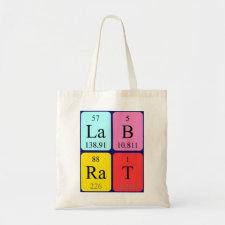
Authors: Gupta BD, Shrivastav AM, Usha SP
Publication date: 2017
Chapter title: Molecular-Imprinting-Based Sensors.
Chapter number: 6
Alternative URL: https://www.taylorfrancis.com/books/9781498789073
Book title: Optical Sensors for Biomedical Diagnostics and Environmental Monitoring
Editors: Gupta BD, Shrivastav AM, Usha SP
Publisher: CRC Press
City: Boca Raton
ISBN: 9781498789073
Abstract: The sensing technology, as mentioned in previous chapters, basically depends on two essential elements: recognition unit and transducing unit. The recognition unit (or sensing layer) changes its properties with the interaction of the target analyte/template. The change is converted into readable signal using the transducer unit and can be analyzed by means of the detector. There are a number of naturally occurring receptors which are extensively used in the sensor fabrication such as antibodies, enzymes, amino acids, DNAs, etc. These receptors are mostly selective for the detection of the template molecules but they suffer from numerous disadvantages such as high cost, complex preparation method, instability in the harsh atmosphere, and not having freedom to choose the template (Subrahmanyam et al. 2002). Thus, to overcome these disadvantages, the work on the synthesis of articial receptors was pioneered and for this, Cram, Lehn, and Pederson won the Nobel Prize in 1987 (Lehn 1995). The greatest advantage of the synthetic receptors is that these have the freedom of molecular design, that is, the variety of templates can be used for the preparation of articial receptors. The designing of articial receptors with high specicity, easy synthesis, and high stability is always a great challenge for the researchers (Amabilino and Stoddart 1995). In the era of fabrication of articial receptors, molecular imprinting came up in which the highly selective memory encampments of the template are fabricated in a polymeric medium. These encampments work as the recognition sites for the template detection; the polymers with templateimprinted sites are called molecularly imprinted polymers (MIPs) and the technology is termed as molecular-imprinted technology (MIT). The process of MIP synthesis includes the trapping of template in a polymerized medium of a functional monomer. The template molecules are then removed from the polymerized medium with a suitable remover. The removal of template molecules from the polymer results in the creation of 3D empty space with opposite shape and size to the template in the polymer. This empty space is known as the recognition site for the template molecule within the polymer (Chen et al. 2016). As the recognition sites have complementary imprints of the template, these are highly selective to interact with the specic template molecule, which is the most important feature of MIT. Besides this, MIPs have numerous other advantages of easy synthesis procedure, high stability even at harsh environments, remarkable robustness, and low cost. Considering these universal features, MIPs attract the researchers and the scientic community to develop the template-specic polymers and apply these in number of applications such as solid-phase extraction, chiral discrimination, chemical/biosensing, preparation of articial antibodies, catalysis, and degradation (Chen et al. 2011).
Template and target information: Review - MIPs in sensors



Join the Society for Molecular Imprinting

New items RSS feed
Sign-up for e-mail updates:
Choose between receiving an occasional newsletter or more frequent e-mail alerts.
Click here to go to the sign-up page.
Is your name elemental or peptidic? Enter your name and find out by clicking either of the buttons below!
Other products you may like:
 MIPdatabase
MIPdatabase









